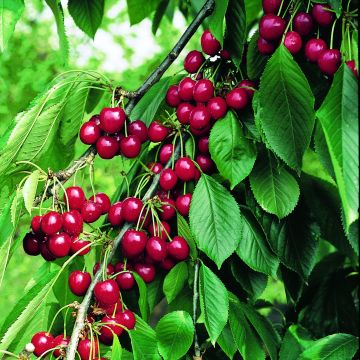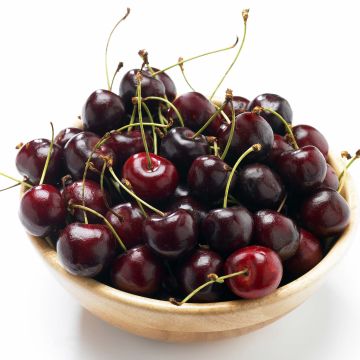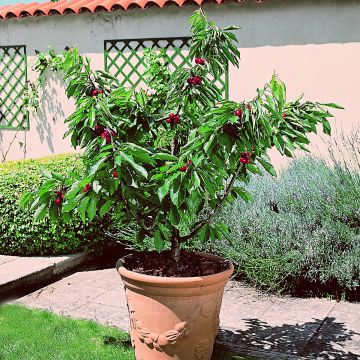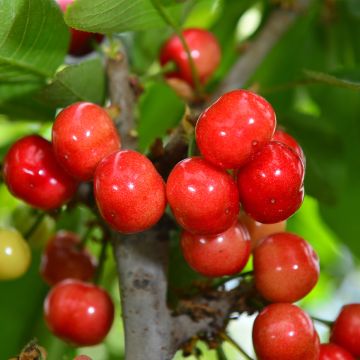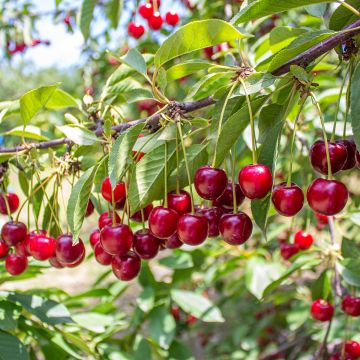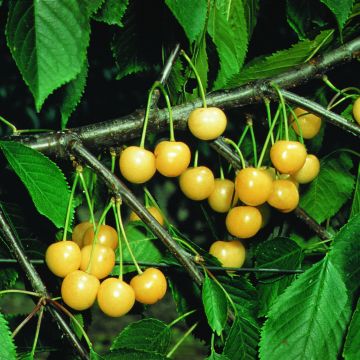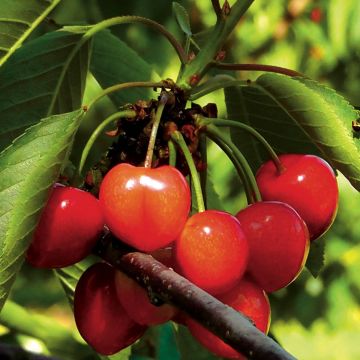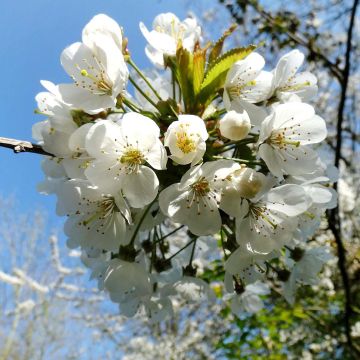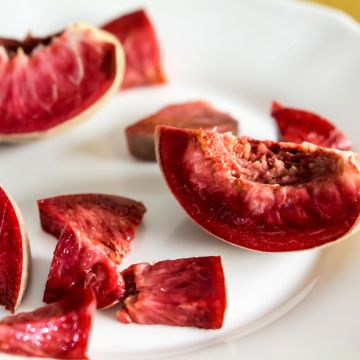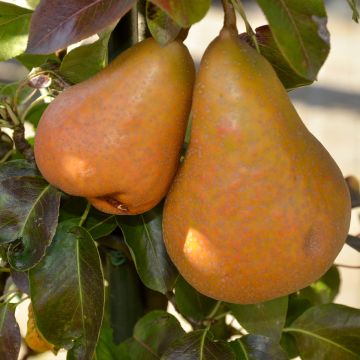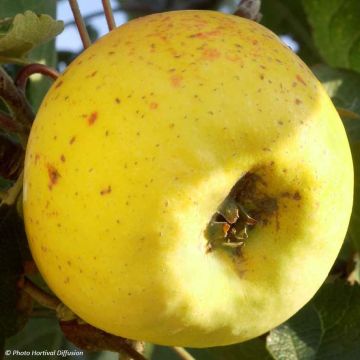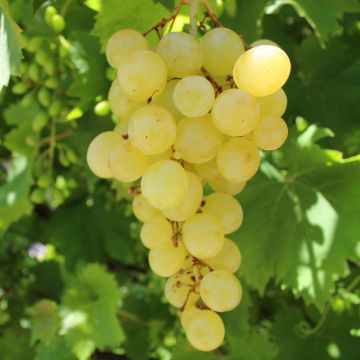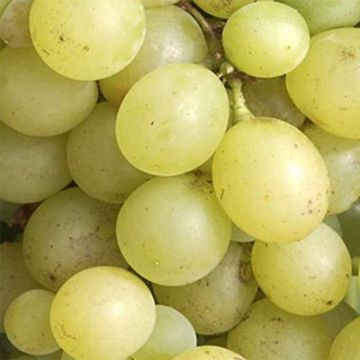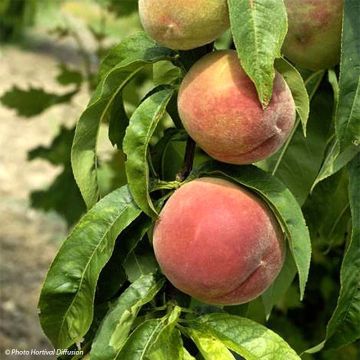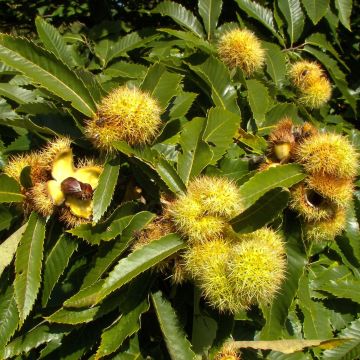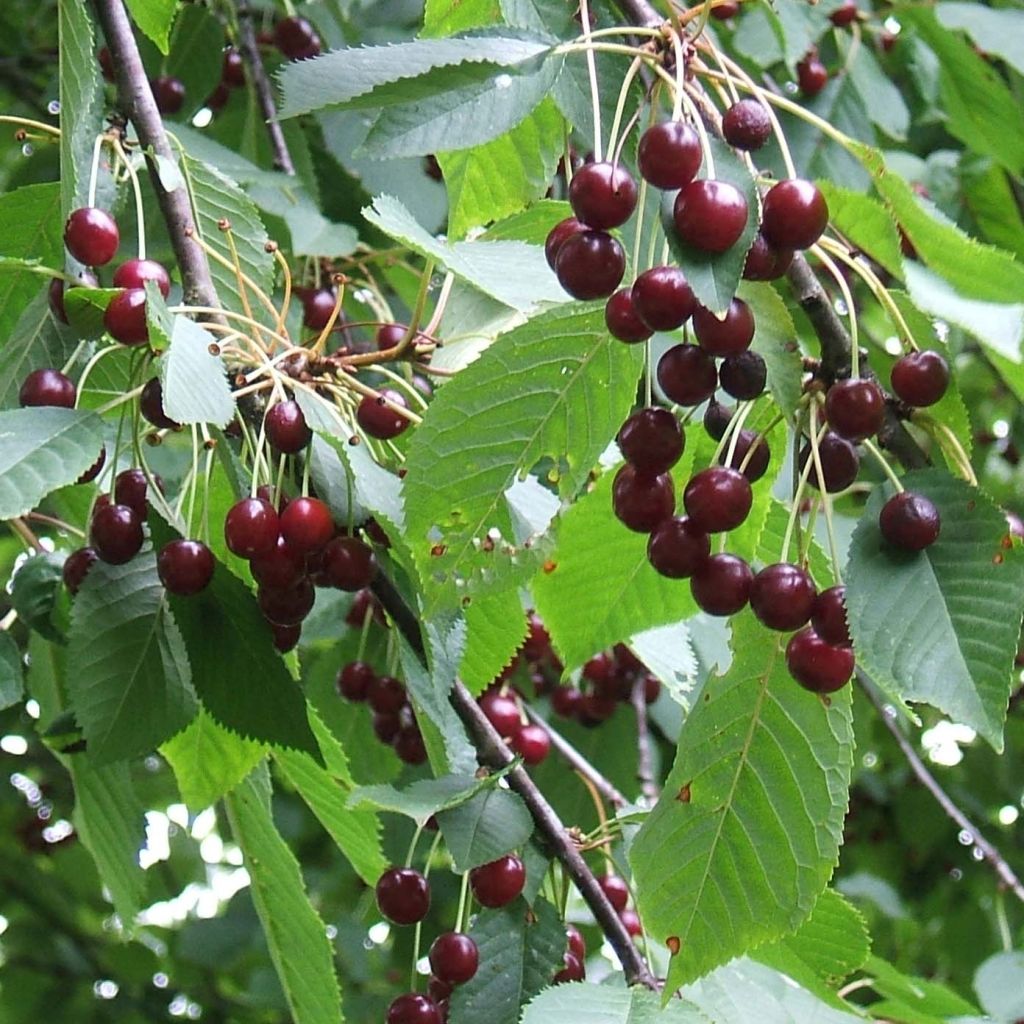

Cerisier Bigarreau Moreau Bio en racines nues, forme scion
Prunus avium Bigarreau Moreau - Cherry Tree
Prunus avium Bigarreau Moreau
Wild Cherry, Sweet Cherry, Bird Cherry
This item cannot be shipped to the selected country
Oversize package delivery charge from €6.90
Delivery to Corse prohibited
More information
Schedule delivery date,
and select date in basket
This plant carries a 6 months recovery warranty
More information
We guarantee the quality of our plants for a full growing cycle, and will replace at our expense any plant that fails to recover under normal climatic and planting conditions.
Oversize package: home delivery by special carrier from €6.90 per order..
Express home delivery from €8.90.
Delivery to Corse prohibited: UE law prohibits the import of this plant from mainland France to Corse as part of the fight against Xylella fastidiosa. Please accept our sincere apologies.
More information
Description
The Cherry Tree 'Bigarreau Moreau' Organic is an old variety of medium vigour, whose productivity is sometimes irregular. Its large heart-shaped cherries, almost black when ripe, are a delight to the taste buds. Fairly resistant to splitting, its cherry has firm flesh, juicy, tasty and sweet. The tree blooms beautifully in spring, and its fruits will be harvested from late May to early June, when fully ripe. This self-sterile cherry tree requires the presence of a nearby pollinator to produce cherries. November is the most suitable month for planting a bare-root cherry tree in the garden. Plants from Organic Agriculture.
The Cherry Tree, in Latin Prunus avium, belongs to the Rosaceae family. It is a medium-sized tree, reaching a height of 5 to 10 metres at maturity. Its rounded habit provides a beautiful shaded space, very pleasant during the summer. Its alternate and toothed leaves are shiny and dark green, then they turn a lovely reddish color in autumn before falling. Cherries are rich in vitamin C, minerals and trace elements.
The 'Bigarreau Moreau' (synonyms 'Bigarreau Sandrin', 'Souvenir des Charmes') was obtained around 1895 in Charmes, in the Rhône department, and commercialized by the Moreau nurseries in Villefranche sur Saône in 1909. It is a variety widely planted in the southeast of France, where orchards are often irrigated.
The tree has a slightly upright habit, it will reach about 6 metres in height and 4.50 metres (15 feet) in width after 10 years, depending on the growing conditions. It blooms between the end of March and the beginning of April, and has good resistance to late frosts. On its bare branches, a multitude of small white flowers bloom, gathered in pairs or in charming little bouquets. But despite abundant flowering, this variety is unable to self-pollinate and requires to be associated with another variety of Bigarreau cherry flowering at the same time to bear fruit: choose Bigarreau 'Napoleon', 'Van' or 'Marmot'. Its fairly rapid fruiting occurs around 3 to 4 years.
Very hardy in most regions, the Cherry Tree 'Bigarreau Moreau' is more resistant to winter cold than to summer drought. The flowers are damaged by spring frosts, so it is recommended to plant the cherry trees in a sheltered location, facing west and protected from cold winds in regions that experience quite significant late frosts. However, the very abundant flowering often results in satisfactory fruiting. The cherry tree is a charming little tree, both delicious, ornamental, disease-resistant and almost maintenance-free. Only the fruit fly needs to be monitored: set up sticky cardboard traps or pheromone traps as soon as the cherries form on the tree. The Cherry Tree can be planted on a lawn, at the back of a flower bed or in an orchard.
For transport reasons, our tallest scions may be pruned before shipping. They are suitable for all common training sizes: cordons, espaliers, goblets, half-standards and low standards, except for the high standards formation. If you would like more information or advice on training your fruit trees, please do not hesitate to contact us.
Report an error about the product description
Prunus avium Bigarreau Moreau - Cherry Tree in pictures
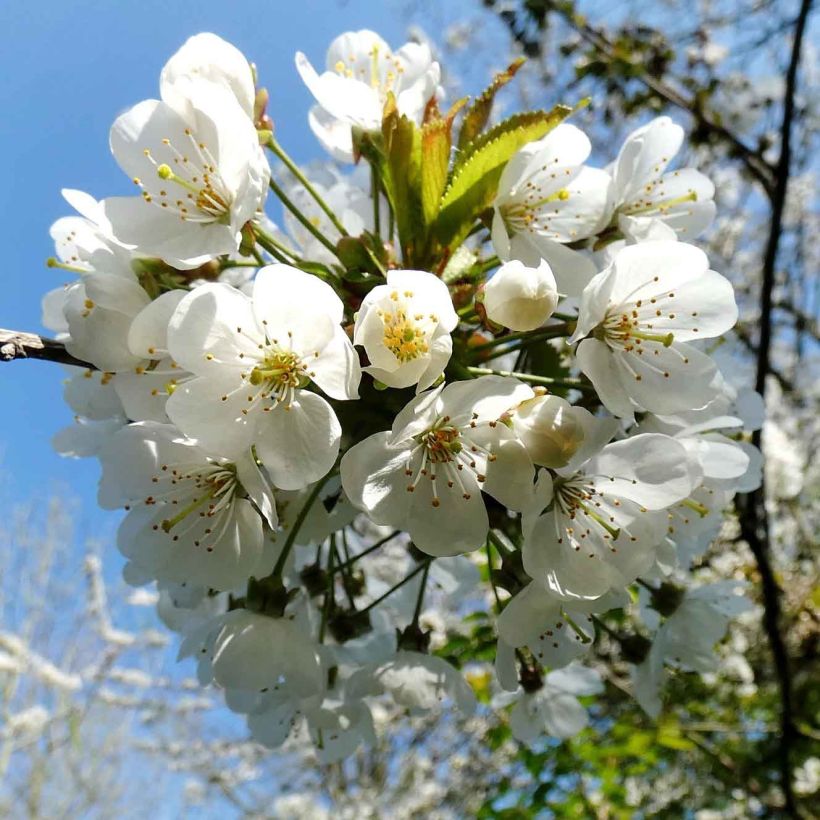

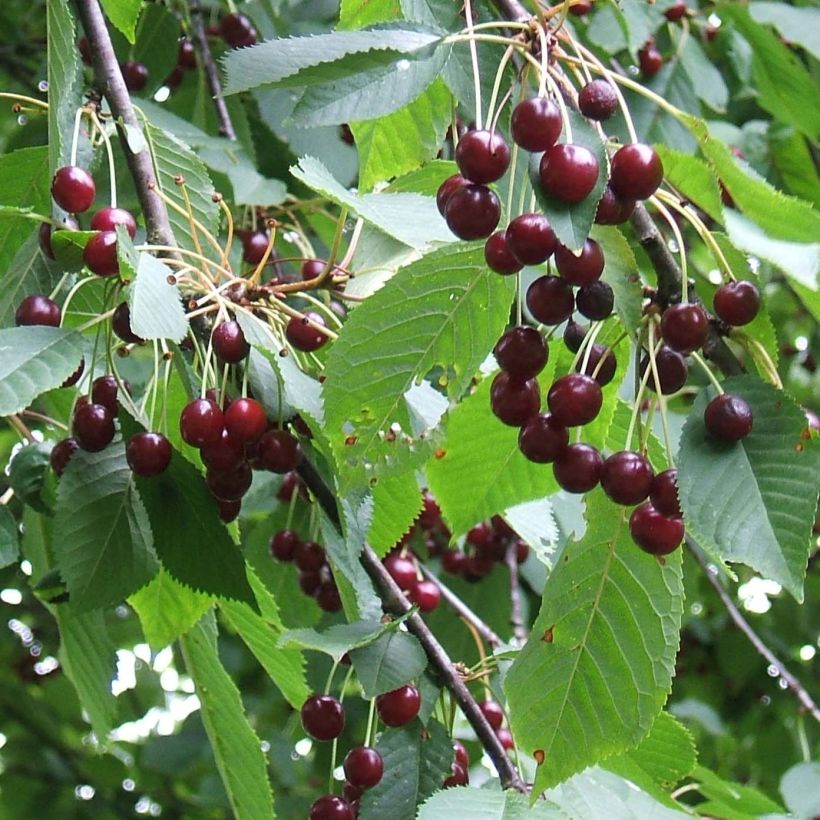

Plant habit
Fruit
Flowering
Foliage
Botanical data
Prunus
avium
Bigarreau Moreau
Rosaceae
Wild Cherry, Sweet Cherry, Bird Cherry
Cultivar or hybrid
Other Cherry trees
Planting and care
Easy to grow, the Cherry Tree thrives in all types of soil, whether acidic or chalky. It prefers moist, light soils and dislikes heavy, clayey soils. Choose a sunny location. To limit the risk of late frosts on the flowers, it is recommended to plant the Cherry Tree in a sheltered position, facing west and protected from cold winds in regions that experience spring frosts. Planting is preferably done in autumn. If you plant multiple trees, space them 4 to 5m (13 to 16ft) apart for cup-shaped plants.
Loosen the soil deeply, remove rocks and unwanted weeds. Add some sand to improve drainage. Dig a hole 4 to 5 times the size of the root ball. Make sure to separate the bottom soil from the top soil. Mix crushed horn or well-rotted compost or potting soil with the bottom soil and pour this mixture into the planting hole. Install a stake. Place the root ball, cover with the top soil and firm it down. Water generously (about 10L). Tie the stake to the plant, crossing the tie in the shape of an 8, without touching the trunk.
During cultivation, watering is not necessary except in case of high temperatures. Mulch at the base to retain freshness in summer. Protect your harvest by installing, either a bird net, aluminum foil or old CDs. In case of aphid infestation, spray soapy water. To combat cherry flies, set up sticky cardboard traps or pheromone traps as soon as cherries form on the tree.
Planting period
Intended location
Care
This item has not been reviewed yet - be the first to leave a review about it.
Ancient and local varieties
Haven't found what you were looking for?
Hardiness is the lowest winter temperature a plant can endure without suffering serious damage or even dying. However, hardiness is affected by location (a sheltered area, such as a patio), protection (winter cover) and soil type (hardiness is improved by well-drained soil).

Photo Sharing Terms & Conditions
In order to encourage gardeners to interact and share their experiences, Promesse de fleurs offers various media enabling content to be uploaded onto its Site - in particular via the ‘Photo sharing’ module.
The User agrees to refrain from:
- Posting any content that is illegal, prejudicial, insulting, racist, inciteful to hatred, revisionist, contrary to public decency, that infringes on privacy or on the privacy rights of third parties, in particular the publicity rights of persons and goods, intellectual property rights, or the right to privacy.
- Submitting content on behalf of a third party;
- Impersonate the identity of a third party and/or publish any personal information about a third party;
In general, the User undertakes to refrain from any unethical behaviour.
All Content (in particular text, comments, files, images, photos, videos, creative works, etc.), which may be subject to property or intellectual property rights, image or other private rights, shall remain the property of the User, subject to the limited rights granted by the terms of the licence granted by Promesse de fleurs as stated below. Users are at liberty to publish or not to publish such Content on the Site, notably via the ‘Photo Sharing’ facility, and accept that this Content shall be made public and freely accessible, notably on the Internet.
Users further acknowledge, undertake to have ,and guarantee that they hold all necessary rights and permissions to publish such material on the Site, in particular with regard to the legislation in force pertaining to any privacy, property, intellectual property, image, or contractual rights, or rights of any other nature. By publishing such Content on the Site, Users acknowledge accepting full liability as publishers of the Content within the meaning of the law, and grant Promesse de fleurs, free of charge, an inclusive, worldwide licence for the said Content for the entire duration of its publication, including all reproduction, representation, up/downloading, displaying, performing, transmission, and storage rights.
Users also grant permission for their name to be linked to the Content and accept that this link may not always be made available.
By engaging in posting material, Users consent to their Content becoming automatically accessible on the Internet, in particular on other sites and/or blogs and/or web pages of the Promesse de fleurs site, including in particular social pages and the Promesse de fleurs catalogue.
Users may secure the removal of entrusted content free of charge by issuing a simple request via our contact form.
The flowering period indicated on our website applies to countries and regions located in USDA zone 8 (France, the United Kingdom, Ireland, the Netherlands, etc.)
It will vary according to where you live:
- In zones 9 to 10 (Italy, Spain, Greece, etc.), flowering will occur about 2 to 4 weeks earlier.
- In zones 6 to 7 (Germany, Poland, Slovenia, and lower mountainous regions), flowering will be delayed by 2 to 3 weeks.
- In zone 5 (Central Europe, Scandinavia), blooming will be delayed by 3 to 5 weeks.
In temperate climates, pruning of spring-flowering shrubs (forsythia, spireas, etc.) should be done just after flowering.
Pruning of summer-flowering shrubs (Indian Lilac, Perovskia, etc.) can be done in winter or spring.
In cold regions as well as with frost-sensitive plants, avoid pruning too early when severe frosts may still occur.
The planting period indicated on our website applies to countries and regions located in USDA zone 8 (France, United Kingdom, Ireland, Netherlands).
It will vary according to where you live:
- In Mediterranean zones (Marseille, Madrid, Milan, etc.), autumn and winter are the best planting periods.
- In continental zones (Strasbourg, Munich, Vienna, etc.), delay planting by 2 to 3 weeks in spring and bring it forward by 2 to 4 weeks in autumn.
- In mountainous regions (the Alps, Pyrenees, Carpathians, etc.), it is best to plant in late spring (May-June) or late summer (August-September).
The harvesting period indicated on our website applies to countries and regions in USDA zone 8 (France, England, Ireland, the Netherlands).
In colder areas (Scandinavia, Poland, Austria...) fruit and vegetable harvests are likely to be delayed by 3-4 weeks.
In warmer areas (Italy, Spain, Greece, etc.), harvesting will probably take place earlier, depending on weather conditions.
The sowing periods indicated on our website apply to countries and regions within USDA Zone 8 (France, UK, Ireland, Netherlands).
In colder areas (Scandinavia, Poland, Austria...), delay any outdoor sowing by 3-4 weeks, or sow under glass.
In warmer climes (Italy, Spain, Greece, etc.), bring outdoor sowing forward by a few weeks.


































